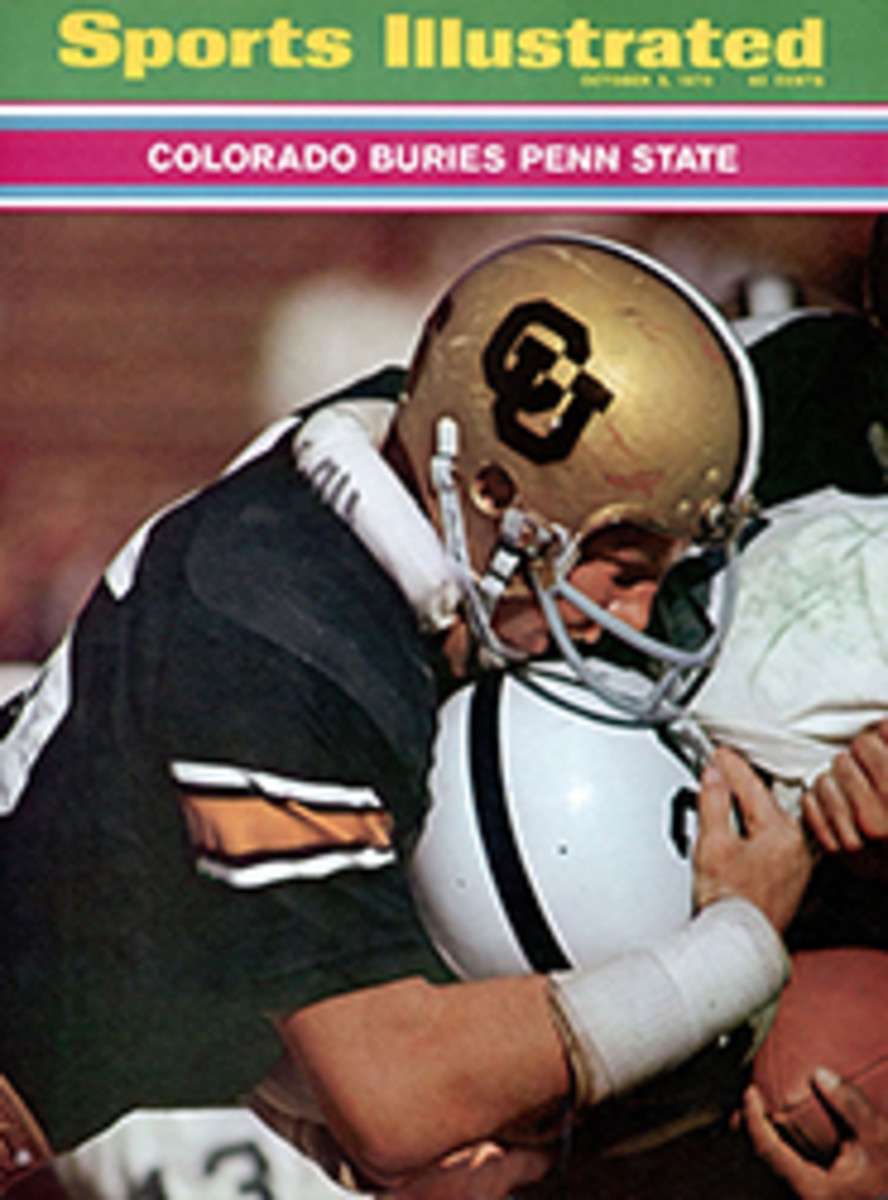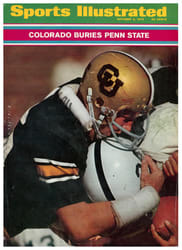
THAT BIG RED MACHINE HAS DEVELOPED A FEW SPUTTERS
While the Mets sank inexorably in the East, the Cincinnati Reds, who long before had celebrated the winning of the West, were not standing idly by. They were moving—in fits and starts, just as they had been since July, when the engine of their "Big Red Machine" began sputtering, crying out, perhaps, for a good lube job and a change of sparkplugs. The best thing about the team's nickname was that it brought instant fame, as Murderers' Row memorialized the New York Yankees and Gas-house Gang the St. Louis Cardinals. But those teams had longevity. The worst thing about the Big Red Machine is that it might remind people of those one-year wonders, the Philadelphia Whiz Kids of 1950.
Or even worse, of half-year wonders. Flying along at a .700 clip at the July All-Star break, the Reds have since played at a pedestrian .543 pace. Their final standing, around .630, is something less than sensational, hardly the type of performance that would eliminate memories of the Dodgers and Cards of the 1940s or the Dodgers of 1953, a club many thought the Reds of 1970 would come close to matching.
This is not to say that the Machine has been reduced to used-car-lot status; the Reds retain their ability to crunch a ball with a bat. All season long they were shut out only once, when Chicago's Milt Pappas beat them 1-0. With players like Pete Rose, Johnny Bench, Tony Perez, Bernie Carbo and Bobby Tolan, Cincinnati's armada of sluggers has hit homers into the hitherto unreached yellow seats in the Houston Astrodome, into the distant green seats in their own Riverfront Stadium and into the empty seats in San Diego. Only Perez has tailed off seriously. For the first half of the year he batted .361 with 27 homers and 84 runs batted in. His second-half numbers are .270, 13 and 45.
But it is the Reds' pitching that is causing the state of Ohio to brood. For a while, with that big lead, the string of pitching injuries that were piling up seemed almost unimportant. But now the injuries are all that anyone connected with the club, particularly Manager Sparky Anderson, can think about. "I have to have four starting pitchers," he said last week, looking forward to the playoffs and, hopefully, the Series. "I don't have anyone who can come back on two days' rest." Well, Anderson has a problem, all right.
Jim Merritt, the team's 20-game winner and only experienced left-handed starter, has a knot in his pitching elbow. Before Saturday, when he went three innings, gave up four hits and a run and pronounced himself "pleased but not 100% out there," Merritt had not worked since Sept. 8. Wayne Simpson, 14-3 and everyone's rookie pitcher of the year in the National League, has been told not to pick up a baseball until the middle of the coming winter because of a hemorrhaged shoulder. As a staff the Reds had achieved only 32 complete games by the end of last week. Merritt and Simpson had 22 of those.
Anderson will probably start with Gary Nolan. Just 22, Nolan has an 18-7 record, a figure that is misleading. He has pitched only four complete games. Jim McGlothlin has failed to finish any of his last eight starts since being struck in the face by a Billy Grabarkewitz line drive in August. The other starter, assuming Merritt pitches, could be either 19-year-old Don Gullett or 20-year-old Milt Wilcox. Little wonder that in Cincinnati Clay Carroll and Wayne Granger have become household names—which doesn't happen often to relievers. Anderson may have to rely on them heavily.
Not all is gloom, however. The 1970 Reds have averaged nearly five runs a game, which can make up for a lot of sore elbows and shoulders, and they have averaged 1.2 home runs a game. Unfortunately, the Pirates have managed to repeal this particular law of averages; against Pittsburgh the figure is one homer every two games. The Machine is going to have to get some new pistons for the playoffs.
As for the American League playoffs, the most unusual aspect may well be the odds, which show the Orioles surprisingly short 6-5 favorites despite their fine record this season and the three-game sweep over the Twins in this same series last year. But there is a strong rivalry between the two teams, who always manage to play both difficult and emotionally demanding games against each other. This season the Twins had the advantage, seven games to five, although they were only 3-3 at Metropolitan Stadium in Bloomington, Minn., where the first two games of their playoff will be fought.
Baltimore is a club that is built on traditional excellences: three 20-game winners in Dave McNally, Mike Cuellar and Jim Palmer, fine defense, the power of Frank and Brooks Robinson and Boog Powell, good speed and aggressive managing. Minnesota enters the playoffs as the least-publicized of the four participating clubs despite having the top team batting average in the American League; the man who leads the league in triples and is second in runs scored, little Cesar Tovar; the player with the most hits and doubles, Tony Oliva; and Harmon Killebrew, second in homers and third in runs batted in.
Perhaps the problem rests with the pitching staff. Although only Baltimore has a better earned run average than Minnesota in the American League, and Jim Perry is a known commodity with back-to-back 20-game seasons, the names of two other starters are something less than national bywords: Tom (The Blade) Hall and Bert Blyleven. Hall weighs in at 158 pounds, but he has struck out 171 hitters in 147 innings pitched, a phenomenal ratio. Blyleven is only 19 but has adapted well since coming to the Twins this year.
The Minnesota starters go as far as they can and then turn the game over to the bullpen, baseball's best: Stan Williams and Ron Perranoski, who between them have made 130 appearances and saved 47 games, winning 17 and losing nine. The Twins, underrated by all except the odds-makers, could just sneak into the final act.
ILLUSTRATION

